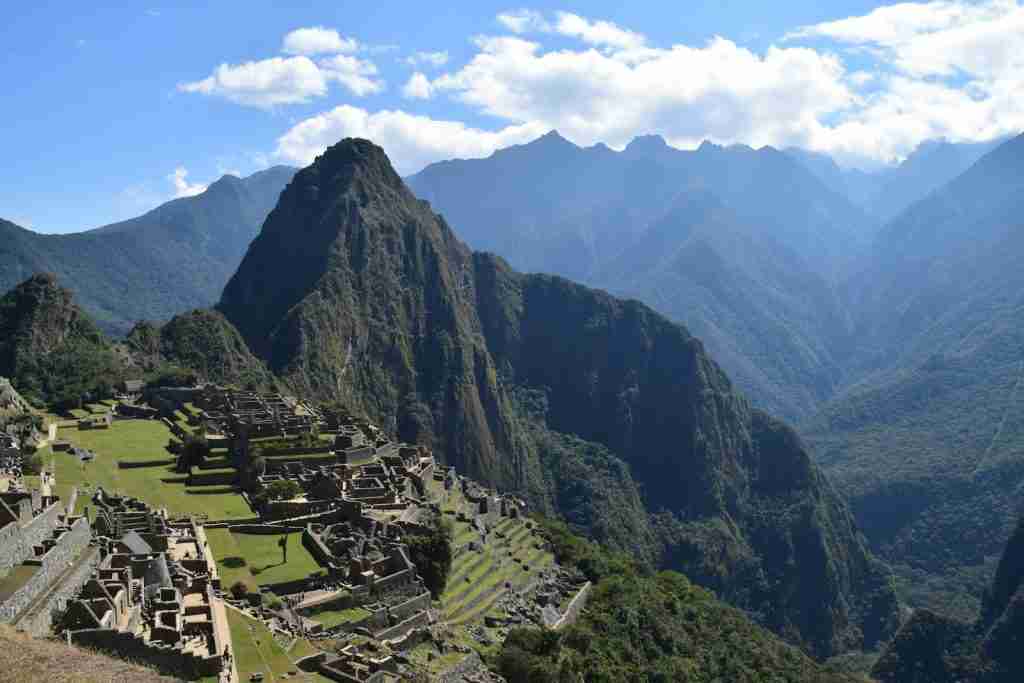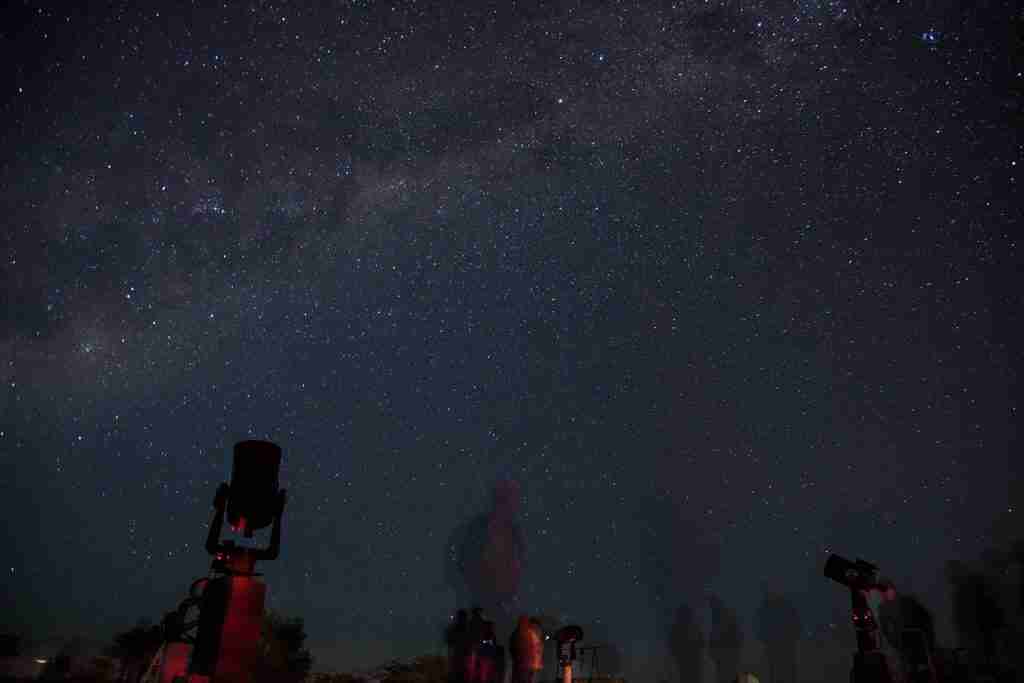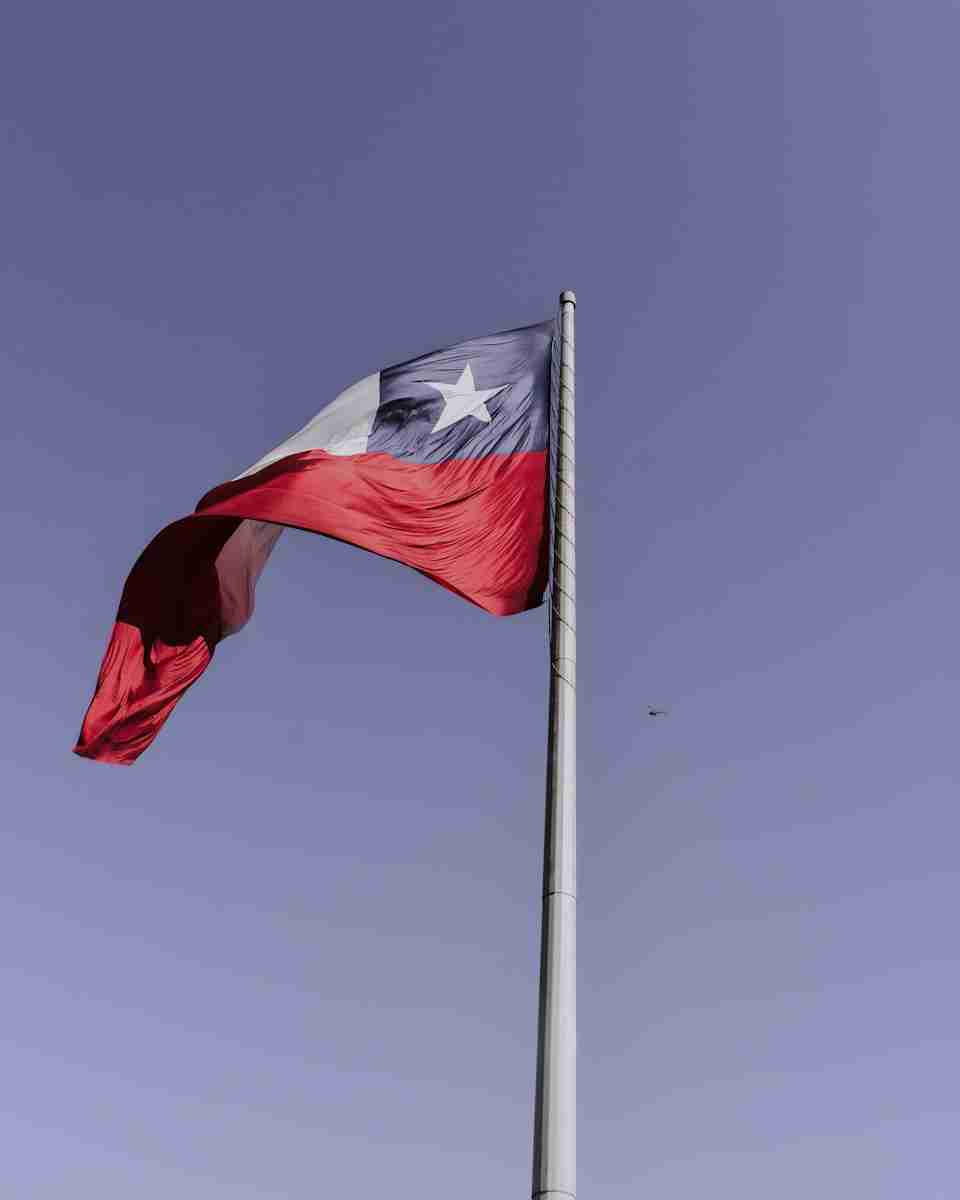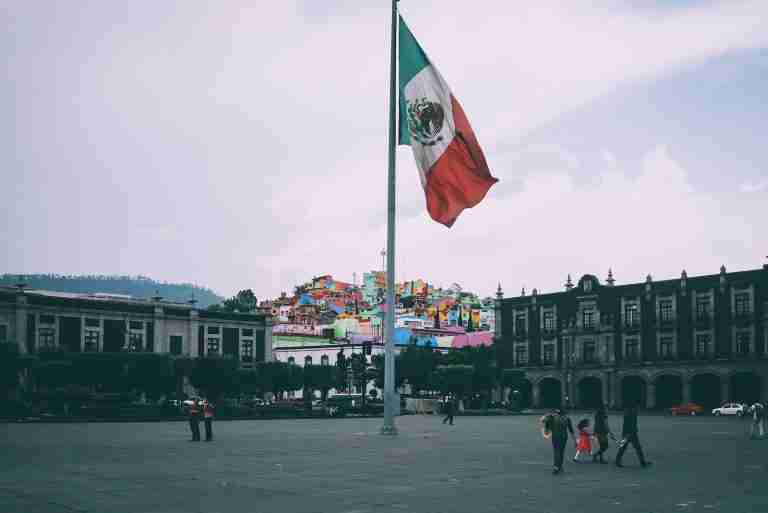25 Fun Facts About Chile | Get Ready for Discoveries
1. Chile is the longest country in the world from north to south.
Chile stretches an incredible 2,670 miles along the southwestern edge of South America, bordering the Pacific Ocean. Its unique, narrow shape encompasses a vastly diverse range of climates and landscapes.
This extreme length makes Chile a land of geographic contrasts. Travelers could experience snowy mountains and arid deserts within the borders of a single country.
2. Chile is home to the driest non-polar desert in the world, the Atacama Desert.
Known for its otherworldly landscapes and remarkably clear skies, the Atacama is a stargazing paradise. This vast, arid expanse offers unique experiences for adventure seekers and astronomers alike.
The Atacama’s extreme dryness creates an environment with minimal life but extraordinary geological formations. It serves as a testing ground for Mars rover technology due to its similarity to the Martian landscape.
3. Chile has one of the world’s largest swimming pools.
Located at the San Alfonso del Mar resort in Algarrobo, this massive pool holds 66 million gallons of water and stretches over 3,000 feet in length. The pool’s size and proximity to the ocean make it a truly unique attraction.
This supersized pool reflects Chile’s love for coastal recreation. Its impressive scale offers a luxurious and playful experience for visitors.
4. Easter Island, famous for its monumental Moai statues, is part of Chile.
This remote island in the Pacific Ocean, known as Rapa Nui to its inhabitants, is a Chilean territory. The enigmatic Moai statues offer a glimpse into the island’s rich Polynesian heritage.
Easter Island’s isolated location and mysterious archaeological sites make it a captivating destination. It adds a unique element of cultural and historical intrigue to Chile’s diverse offerings.
5. Chile is a wine lover’s paradise, renowned for its diverse wine regions.
From the cool-climate Casablanca Valley to the sun-drenched Maipo Valley, Chile boasts a wide range of винодельческие regions. The country is known for its exceptional Carmenere, Cabernet Sauvignon, and Sauvignon Blanc varieties.
Chile’s unique geography and climate make it a significant player in the world of wine. Wine enthusiasts can embark on tasting tours through picturesque valleys and discover the country’s rich viticultural history.
6. Chile experiences some of the strongest earthquakes in the world.
Situated along the Pacific “Ring of Fire,” Chile is prone to frequent seismic activity. The largest earthquake ever recorded happened in Valdivia, Chile, in 1960, registering a magnitude of 9.5.
These powerful earthquakes have shaped Chile’s landscape and influenced its building codes. They emphasize the dynamic forces at play beneath the country’s surface.
7. Chile is home to a significant penguin population.
Several penguin species, including Magellanic, Humboldt, and King penguins, can be found along Chile’s coastline and islands. Visitors can enjoy penguin-watching tours to observe these charismatic birds in their natural habitat.
The presence of penguins showcases the ecological richness of Chile’s coastal environments. They also add a delightful and playful element to the country’s wildlife attractions.
8. The Andes Mountains form a dramatic backdrop to much of Chile.

The towering Andes range runs along Chile’s eastern border, offering breathtaking scenery and opportunities for outdoor adventures. Skiers and snowboarders can enjoy world-class slopes with stunning mountain vistas.
The Andes play a crucial role in shaping Chile’s climate and geography. They provide a source of water for the country and hold cultural significance for indigenous communities.
9. Chileans are avid tea drinkers, with one of the highest per capita consumption rates in the world.
Tea culture is deeply ingrained in Chilean society, with tea breaks being a common social custom. While influenced by British traditions, Chile has developed its own unique tea-drinking habits.
This love for tea demonstrates a distinct aspect of Chilean culture. It offers a warm and welcoming experience for visitors to share with locals.
10. Chile is home to active volcanoes, adding a spectacular element to its landscape.
The Chilean stretch of the Andes Mountains contains numerous active volcanoes, including Villarrica and Llaima. These geological wonders attract both adventurers and scientists.
Volcanoes serve as a reminder of Chile’s dynamic geology and the ongoing natural forces shaping the country. They create awe-inspiring landscapes and provide insights into the Earth’s inner workings.
11. The Chilean national dance is called the Cueca.
This lively folk dance involves couples playfully using handkerchiefs and performing intricate steps. The Cueca is a symbol of Chilean identity and is often performed during national celebrations.
The Cueca reflects Chile’s rich cultural heritage and spirited nature. It offers visitors a window into the country’s traditions and artistic expression.
12. Chile is a top destination for astronomy enthusiasts.

Thanks to its clear skies and high-altitude deserts, Chile houses some of the world’s most powerful observatories. These advanced telescopes allow astronomers to uncover the secrets of the universe.
Chile’s commitment to astronomy makes it a hub for scientific discovery and innovation. Stargazing tours in the Atacama Desert offers a chance for anyone to experience the wonders of the cosmos.
13. Chileans celebrate a long independence day festival called Fiestas Patrias.
This multi-day celebration in September commemorates Chile’s independence from Spain. Fiestas Patrias are marked by parades, traditional food, music, and dancing.
This vibrant festival showcases Chile’s patriotism and love for festive gatherings. It provides a lively and immersive cultural experience for visitors.
14. Chileans have a unique slang filled with colorful expressions.
Chilean Spanish is peppered with playful phrases and words known as “Chilenismos” Learning some of these expressions can enhance a visitor’s ability to connect with locals and understand everyday conversations.
This distinct slang reflects the vibrant and expressive nature of Chilean culture. It adds another layer of interest for visitors who want to delve deeper into the linguistic landscape.
15. The Torres del Paine National Park in Chilean Patagonia is renowned for its stunning scenery.
This breathtaking park is home to towering granite peaks, glaciers, turquoise lakes, and diverse wildlife. Patagonia’s natural beauty attracts hikers and nature lovers from around the globe.
Torres del Paine showcases Chile’s wild and scenic landscapes. It’s a testament to the country’s commitment to preserving its natural wonders.
16. The Chilean rodeo is the country’s national sport.

Chilean rodeos feature skilled ‘huasos‘ (cowboys) demonstrating their horsemanship and cattle-herding abilities. This traditional sport is an important element of Chilean rural culture.
While Chilean rodeos can spark debate due to animal welfare concerns, they offer a glimpse into the country’s agricultural heritage and customs. Understanding the tradition provides additional context into rural Chilean life
17. Chile is one of the world’s narrowest countries.
Despite its incredible length, Chile’s average width is only about 110 miles. This unique geography makes it easy to travel between the Andes Mountains and the Pacific coast in a relatively short amount of time.
Chile’s narrow shape contributes to its remarkable diversity of landscapes and climates compressed within its borders. This allows visitors to experience a variety of environments with ease.
18. Chileans consume a massive amount of bread.
Bread, known as ‘pan,’ is a staple food in Chile, with varieties like marraqueta being a national favorite. Bakeries are abundant, and bread is enjoyed with most meals.
This love for bread highlights an important aspect of Chilean culinary traditions. Visitors can enjoy sampling the diverse selection of fresh, locally-baked bread.
19. Chile has a thriving street art scene.
Cities like Santiago and Valparaiso boast vibrant murals and graffiti artworks that adorn buildings and streets. Street art in Chile often reflects social and political themes.
These open-air galleries add color and creative expression to Chile’s urban landscapes. Exploring a city’s street art offers a unique way to engage with its artistic energy and cultural dialogue.
20. Seaweed is a common ingredient in Chilean cuisine.

Varieties of seaweed such as cochayuyo and luche are used in soups, salads, and other dishes. Seaweed adds unique flavors and textures to Chilean food, reflecting the country’s long coastline.
The use of seaweed showcases Chile’s connection to the ocean and its culinary creativity. Visitors with adventurous palates will find these flavors a surprising and innovative element of meals.
21. Pablo Neruda, a Nobel Prize-winning poet, was Chilean.
Celebrated for his passionate love poems and odes to everyday objects, Neruda is considered one of the greatest Latin American poets. Visitors can delve into his works and visit his quirky houses-turned-museums.
Neruda’s literary legacy is a source of national pride for Chile. His poetry captures the spirit and landscapes of his homeland, enriching the cultural experience offered to travelers.
22. Chileans love to celebrate, with numerous festivals throughout the year.
From the vibrant Tapati Festival on Easter Island to the lively grape harvest celebrations (vendimia), Chile offers ample opportunities to experience its festive spirit. These events are filled with music, dancing, and traditional foods.
Participating in local festivals adds a layer of cultural immersion for travelers. It allows visitors to witness Chilean customs and share in the country’s joyful celebrations.
23. Avocados, a fruit beloved worldwide, are called “paltas” in Chile.
Avocados thrive in Chile’s central region and are a popular ingredient in Chilean cuisine. Visitors will likely encounter them in salads, sandwiches, or even ice creams.
The Chilean name ‘palta’ for avocados showcases linguistic variations within the Spanish language. It’s a fun detail that food enthusiasts might find interesting.
24. Chile is a major producer of blueberries.

Blessed with fertile land and suitable climate, Chile has become a leading exporter of fresh blueberries. Blueberry production is an important contributor to the country’s agricultural economy.
Visitors may see vast blueberry fields and enjoy the abundance of this superfood readily available in local markets. This illustrates a modern and successful aspect of Chilean agriculture.
25. The “palomilla” is a unique Chilean driving habit.
The ‘palomilla‘ refers to drivers who flash their headlights to signal they’ll yield or let others merge. This informal practice reflects a friendly and cooperative attitude on Chilean roads.
This small custom is an example of Chile fun facts that offer a glimpse into the nuances of daily life. It’s a gesture visitors might pick up on during their travels.
FAQs
Chile is a long, narrow country located along the western edge of South America, stretching over 4,300 kilometers (2,670 miles) from north to south. It is bordered by the Pacific Ocean to the west, Peru to the north, Bolivia to the northeast, and Argentina to the east.
The currency of Chile is the Chilean Peso, represented by the symbol “$” or “CLP.” It is the official currency used for everyday transactions, shopping, dining, and financial activities throughout the country.
Yes, Chile is known for its frequent seismic activity due to its location along the Pacific Ring of Fire. The country has a history of powerful earthquakes, including the 1960 Valdivia earthquake, the strongest ever recorded.
Traditional Chilean cuisine is diverse and flavorful, featuring dishes such as empanadas (savory pastries), pastel de choclo (corn pie), and ceviche (marinated seafood). The cuisine often incorporates fresh seafood, hearty meats, corn, potatoes, and a variety of spices and herbs.
The flag of Chile consists of two horizontal bands of white and red, with a blue square in the top left corner containing a white five-pointed star. The white symbolizes the snow of the Andes Mountains, the red represents the blood shed for independence, and the blue stands for the sky and the Pacific Ocean.







